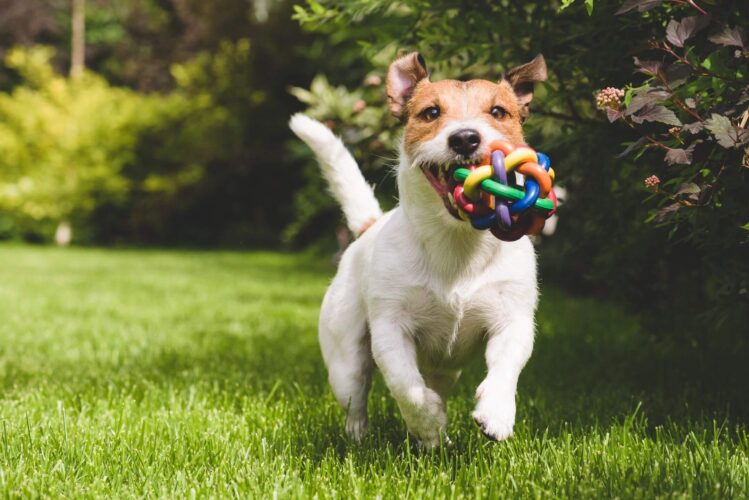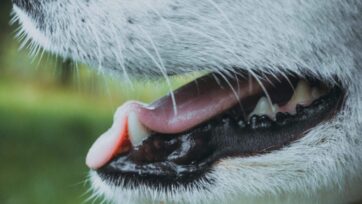
SO JUST WHAT IS LEPTOSPIROSIS?
The disease Leptospirosis is caused by the shedding of bacteria in the urine of infected wildlife. Common animals such as Deer, Skunks, and raccoons are the biggest spreaders, even though rodents such as mice and rats can also carry the disease. Being very dangerous Leptospirosis typically causes severe kidney and liver damage, which at times can be fatal. It is a zoonotic disease, meaning that it can also infect humans.
It’s important for dog owners to be aware of this disease, understand how it is spread, what signs to watch for, and maybe most importantly, learn the best ways to prevent it.
Leptospire is a specific kind of bacteria called a spirochete. It’s different from other bacteria in that it cannot be easily cultured in a laboratory, meaning that it makes it very difficult for your veterinarian to definitively diagnose that your dog is sick.
YOUR DOG’S KIDNEYS ARE IN DANGER
It’s in the kidneys of common hosts, such as deer, skunks, and raccoons that the leptospire multiplies. These so-called reservoir hosts are those that have adapted to this organism and therefore do not get ill from this disease, they just carry the organism and shed it in their urine. The leptospire doesn’t multiply once it’s shed into the environment, but it can survive for weeks and sometimes months in warm, wet conditions. It thrives in stagnant water, puddles, and muddy soil. It is in these kinds of areas that your dog is most likely to encounter it.
ANIMALS THAT BECOME SICK FROM LEPTOSPIROSIS
Animals who become sick with leptospirosis are called incidental hosts. These include dogs and humans. The leptospire enters the incidental host through mucous membranes (either when swimming or drinking from the muddy puddles) or through breaks in the skin (again, either by swimming or just wandering through the mud with cuts or sores in the skin).
Upon entering the bloodstream of the susceptible host, leptospires multiply rapidly where they immediately start damaging the lining of blood vessels. This blood vessel injury then leads to organ damage. The kidneys and liver are most commonly affected, but leptospirosis can cause injury to the lungs, eyes, and central nervous system.
WHERE ARE THE GREATEST RISKS
Being a global disease, it is most prevalent in areas with high rainfall and warmer climates, in the U.S., Hawaii is the biggest hotbed for leptospirosis, but there have been cases reported all over the country. The highest numbers are on the West Coast, in the upper Midwest, and also the Northeast, Southwest, and mid-Atlantic coastal regions. The case numbers in the U.S. peak in the fall.
Be aware that home environments with high neighborhood wildlife populations pose the greatest risk, especially if you have a yard not fenced to keep animals like deer out.
When your lifestyle includes camping, hiking, or taking walks in parks or wooded areas with your dog, the risk of exposure to leptospirosis is going to be higher. If you live in an urban area with a more sedentary or indoor lifestyle, the risk is much lower, but know that rats and mice can also be carriers.
WHAT ARE THE SIGNS?
When a dog gets infected with leptospirosis, there can be variable signs but usually includes lethargy and loss of appetite. Fever, vomiting, diarrhea, excessive thirst, and urination are common, Icterus (yellow mucous membranes) frequently occurs when there is liver involvement.
A less common but possible sign includes muscle pain, abdominal pain, and inflammatory eye conditions. Damage to the lungs can lead to difficulty breathing and coughing up blood. Lung involvement, which carries a much greater prognosis, is thankfully not common.
It can be very challenging to diagnose leptospirosis in dogs. Your veterinarian often will use a combination of history, physical exam findings, blood tests, and urinalysis and can lead to the initial index of suspicion for this disease. If the suspicion is high enough, the next step includes the submission of blood for a test called a microscopic agglutination test (MAT). This test looks for antibodies against leptospirosis. But there is a lot more to this than meets the eye.
There are several complicating factors that make a single MAT insufficient for a definitive diagnosis of leptospirosis. First, antibodies are not always identifiable early in the course of a disease. It takes time for the immune system to form antibodies. And when taken two weeks later (the convalescent titer). if this shows a fourfold or greater increase in titer, it is considered diagnostic for leptospirosis. But we can’t wait two weeks to start therapy as soon as possible.
Often to make matters worse, antibiotic therapy may dampen the rise in the antibody titer we use for making a definitive diagnosis. So while it may well be leptospirosis, it might not look like it, based on a lack of rising titer in the paired samples. While this can be frustrating what has been learned is that as long as the initial index of suspicion is high enough, the patient receives early appropriate therapy, a full recovery is often possible. We just won’t be able to say that it was definitely leptospirosis in this situation, it can only be said that it probably was.
WHAT CAN YOU DO?
A diagnosis may not always be easy but the treatment is fairly standard. The leptospire organism is not sensitive to many antibiotics, but thankfully it is highly sensitive to a few. This means that if your dog gets a fast and accurate diagnosis, and appropriate treatment is started in the early stages of the disease, usually a good outcome is expected, as many as 80% of dogs handled in this manner will make full recoveries.
The right antibiotic therapy is paramount to a successful outcome. Penicillin, or its derivative ampicillin, is usually instituted early, as these drugs eliminate the bacteria from the bloodstream. Doxycycline is typically given for at least two weeks, as this antibiotic helps clear the organism from the kidneys. Anti-emetics (anti-vomiting) and pain medications are administered as needed.
Treatment almost always involves admission to the hospital for several days or longer, depending on how serious the disease is. Kidney and liver involvement requires aggressive intravenous fluid therapy and close professional monitoring. Patients with severe kidney failure who don’t respond to intravenous fluid therapy should be referred to a specialty center for dialysis.
When allowed to come home your dog will require close monitoring for several months even though a good prognosis can be given at this point.
Your veterinarian will advise you on how to safely handle your dog’s urine at home, which includes wearing gloves when cleaning it up. Routine household disinfectants containing bleach are effective against this bacteria, so using a yard sprayer and a bleach solution to spry each place where your dog urinates in your yard would be advisable.
When you have other dogs at your home ask your veterinarian about maybe proactively treating the others with doxycycline just to be on the safe side.
NOW THE PREVENTION
Controlling rodents, indoors and out, is always important. A fenced yard will help prevent the larger wildlife reservoirs like deer from urinating where your dog goes out. Always remember that there is always an environmental risk of exposing your dog to leptospires.
Now the importance of vaccination comes into play. The canine leptospirosis vaccines that are currently available all help protect against four serovars of the bacteria. While the four serovars in the vaccine are not the only serovars your dog may encounter in the U.S. – more than 200 different leptospirosis serovars have been identified – they are the most common. Furthermore, the vaccine provides some cross-protection from the other serovars. Even better, there is some evidence that vaccinated dogs who become infected with leptospirosis may experience less severe symptoms.
One recommendation is to wait until the dog is at least 12 weeks of age to start the leptospirosis vaccine. The initial series requires two doses, given three weeks apart. Then, an annual booster shot is given. In locations where veterinarians see a lot of cases, your vet may recommend shots be more frequently than that, maybe as often as every six to nine months, based on their clinical experience.
WHAT TO WATCH OUT FOR
The reputation for the leptospirosis vaccine in the past was not the best. In years past the vaccine seemed to cause significantly more, and significantly worse, adverse reactions in dogs than the other vaccines. The smaller dogs, especially Pugs and Dachshunds, were definitely the most victimized breeds when it came to reactions associated with the leptospirosis vaccine. Breeders of these small breeds would often warn their puppy buyers of the danger of this vaccine and strongly advise against using it.
Vaccines today are much improved over those of the past and so is the leptospirosis vaccine. Recent studies have shown that this vaccine is no more reactive than any of the other routine canine vaccines.
But vaccination isn’t always perfect and why it’s a good idea to have a disease assessment for each individual dog before deciding on which vaccine to use. Any time you or your dog receives a vaccine, you will be accepting some risk. Reactions range from mild (just not feeling well for 24 hours) to moderate (hives and/or vomiting and diarrhea) to severe (life-threatening anaphylactic shock). Vaccination can also have delayed reactions that show up weeks later in the form of auto-immune disease.
If your dog has minimal to no risk of getting this disease, it might not be wise to expose your dog to the inherent risks associated with vaccination. The current American Animal Hospital Association Vaccination Guidelines support this course of action by listing leptospirosis as a “non-core” vaccine, which means that it may not be appropriate for all dogs. Examples of core vaccines, which are recommended for all dogs, include distemper, parvovirus, and rabies.
You don’t have to be afraid of getting a leptospirosis vaccine for your dog, but do a thoughtful risk assessment, considering your environment and lifestyle. If you conclude that your yard can be accessed by skunks, raccoons, and deer, or you have a large wildlife population near your home, this can increase your dog’s risk of getting the disease.
Of course, whatever decision you make is up to you. But it is always advisable to include your veterinarian in part of the decision.
THANK YOU FOR THIS ARTICLE
This article was published in the “Whole-Dog-Journal”.com
By Eileen Fatcheric, DVM
Published April 21, 2021


